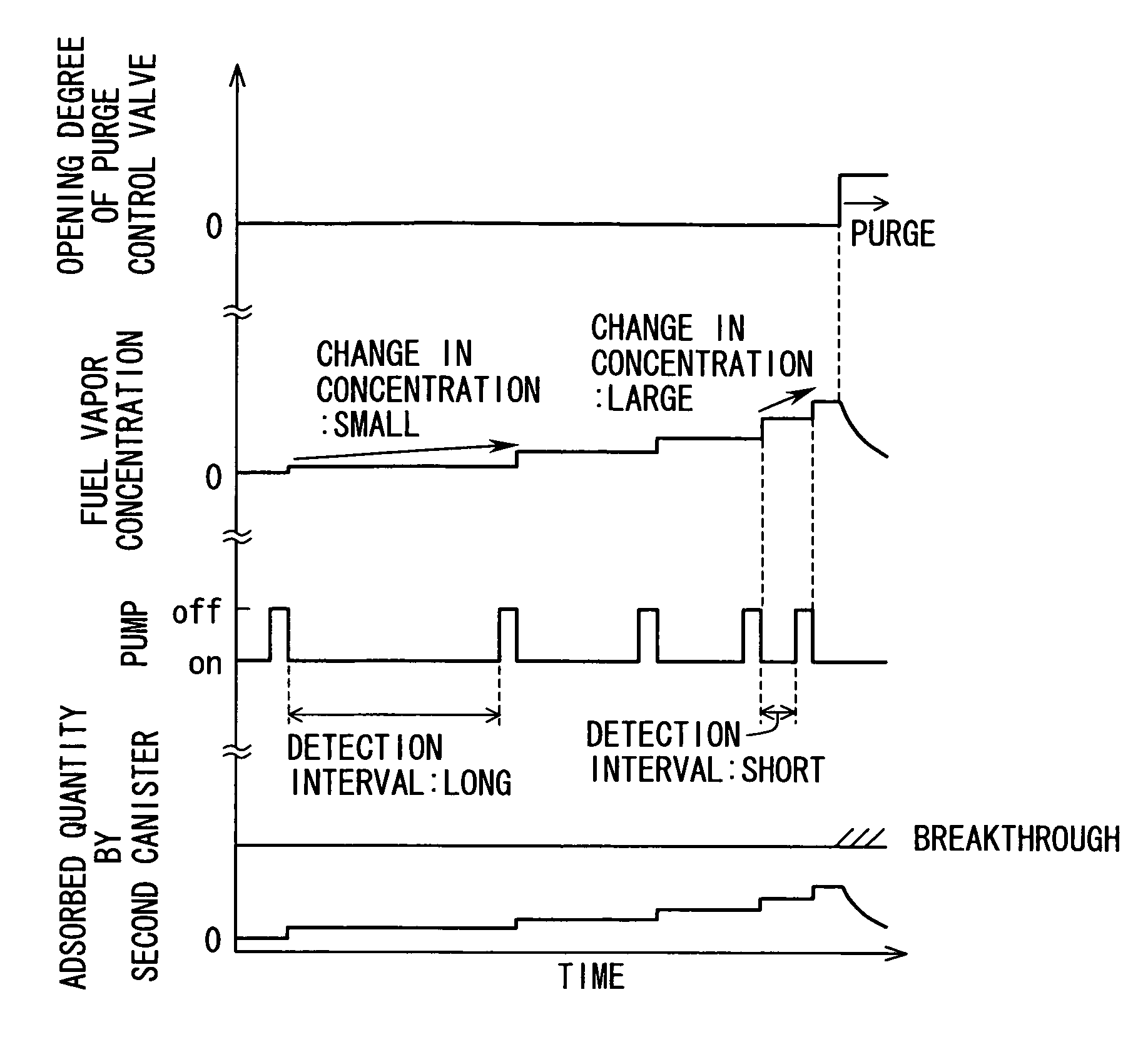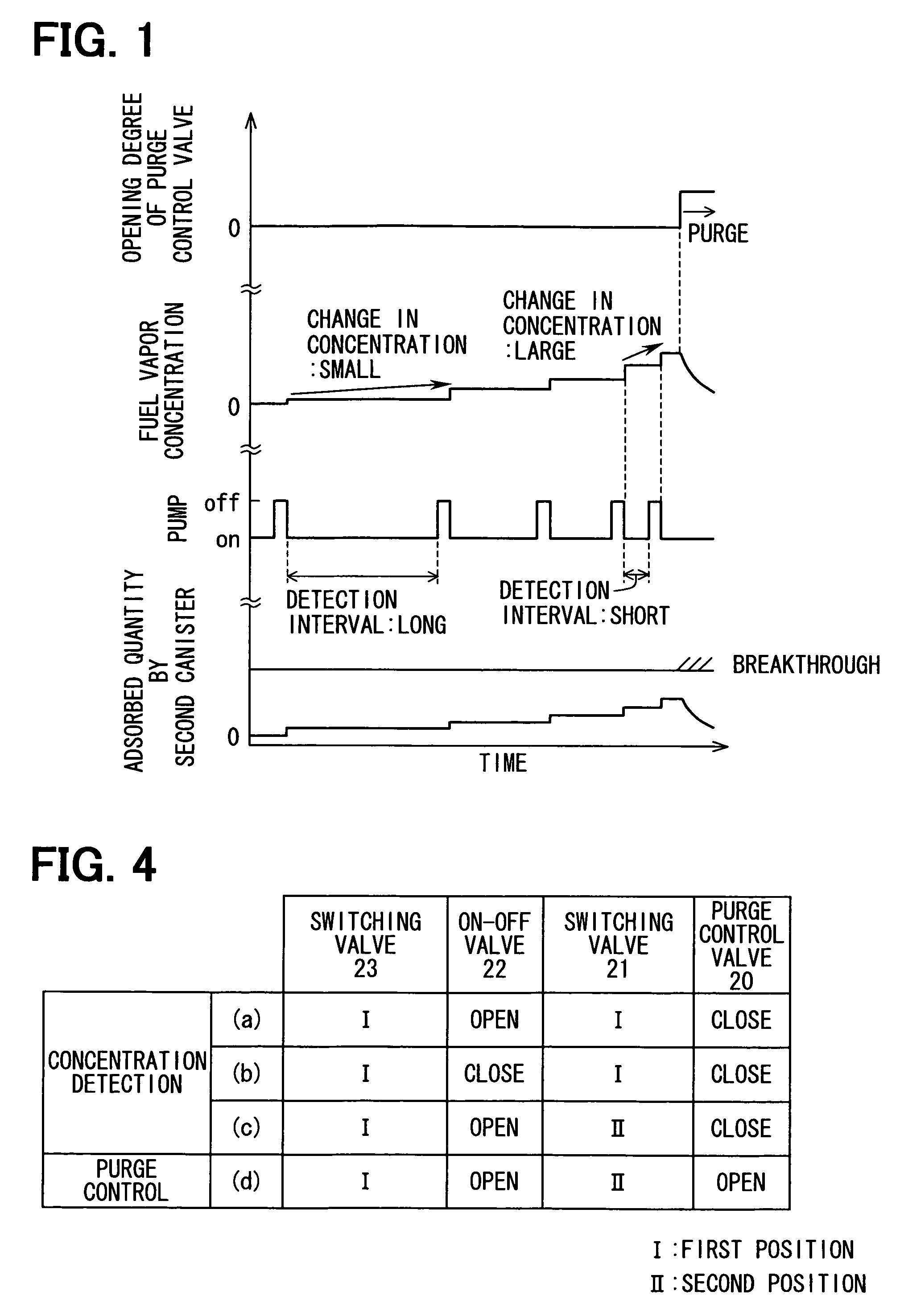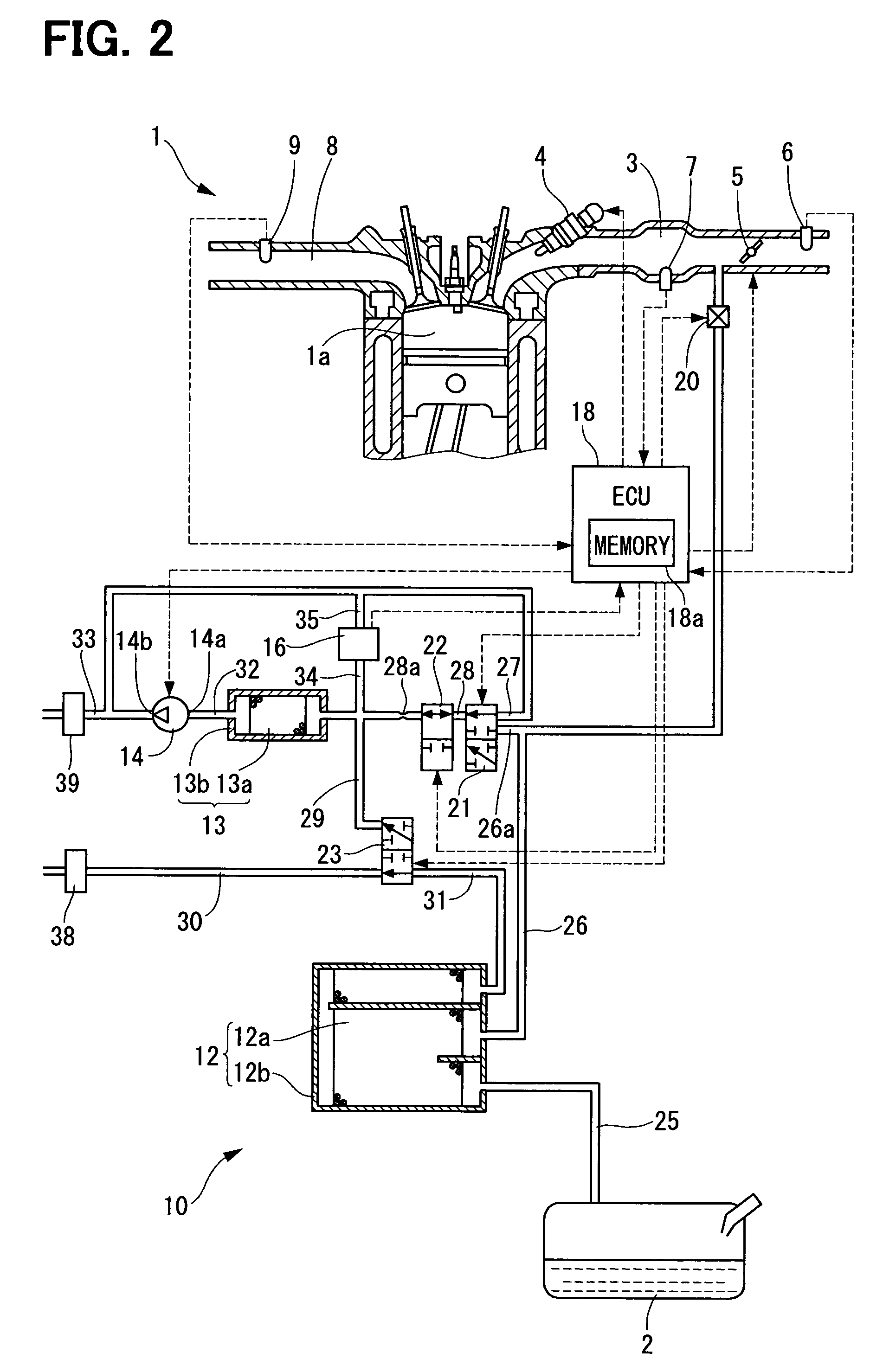Fuel vapor treatment system
a technology of fuel vapor treatment and treatment system, which is applied in the direction of combustion-air/fuel-air treatment, electric control, instruments, etc., can solve the problems of air-fuel ratio disturbance, and achieve the effect of restricting a disturbance of air-fuel ratio and ensuring enduran
- Summary
- Abstract
- Description
- Claims
- Application Information
AI Technical Summary
Benefits of technology
Problems solved by technology
Method used
Image
Examples
first embodiment
[0027]FIG. 2 shows a first embodiment of a fuel vapor treatment system 10 which is applied to an internal combustion engine 1.
[0028]The internal combustion engine 1 is a gasoline engine which generates power using gasoline accommodated in an interior of a fuel tank 2. An intake pipe 3 of the engine 1 is provided with a fuel injector 4 which controls a fuel injection quantity, a throttle valve 5 which controls an intake air flow rate, an intake air flow rate sensor 6 which detects an intake air flow rate, and a intake air pressure sensor 7 which detects intake air pressure. An exhaust pipe 8 of the engine 1 is provided with an air-fuel ratio sensor 9 which detects an exhaust gas air-fuel ratio.
[0029]The fuel vapor treatment system 10 is the apparatus for treating the fuel vapor generated in the fuel tank 2, and burning the fuel vapor with the injected fuel by the fuel injector 4. The fuel vapor treatment system 10 is specifical...
second embodiment
[0067]FIG. 7 is a flowchart showing a second embodiment which is a modification of the first embodiment.
[0068]S102, S103, S105, and S106 in the first embodiment are respectively replaced by S201, S202, S203, and S204.
[0069]In S201, the pressure ΔPAir, Pt, ΔPGas are detected and the fuel vapor concentration D is computed. This concentration D is stored in the memory 18a as a first reference concentration Db. At this moment, the first reference concentration Db previously stored in the memory 18a is remained in the memory 18a as a second reference concentration Db. The second reference concentration Db stored in the memory is the latest value of the detected value of the fuel vapor concentration D in the previous concentration detection process and the adapted value of the fuel vapor concentration D is the latest purge control process. At the first concentration detection process, since the second reference concentration Db does no exist in the memory 18a, the first reference concentr...
third embodiment
[0076]As shown in FIG. 9, the third embodiment is a modification of the first embodiment.
[0077]In the third embodiment, S301 and S302 are respectively added after S103 and S106 of the first embodiment, so that the detection interval ΔT is corrected.
[0078]In S301, a first correction process is executed so that the detection interval ΔT is corrected based on an inner pressure P of the fuel tank 2. This is because that when the inner pressure P in the fuel tank increases, the fuel vapor quantity in the fuel tank is increased. The adsorbed quantity “A” in the first canister 12 increases and the fuel vapor concentration D in the purge passage 26 tends to be easily changed.
[0079]In the first correction process, a correction coefficient Cp is computed according to the current inner pressure P. As shown in FIG. 10, as the inner pressure P increases, the correction coefficient Cp becomes smaller. The stored interval ΔT is multiplied by the correction coefficient Cp to correctly update the de...
PUM
 Login to View More
Login to View More Abstract
Description
Claims
Application Information
 Login to View More
Login to View More - R&D
- Intellectual Property
- Life Sciences
- Materials
- Tech Scout
- Unparalleled Data Quality
- Higher Quality Content
- 60% Fewer Hallucinations
Browse by: Latest US Patents, China's latest patents, Technical Efficacy Thesaurus, Application Domain, Technology Topic, Popular Technical Reports.
© 2025 PatSnap. All rights reserved.Legal|Privacy policy|Modern Slavery Act Transparency Statement|Sitemap|About US| Contact US: help@patsnap.com



